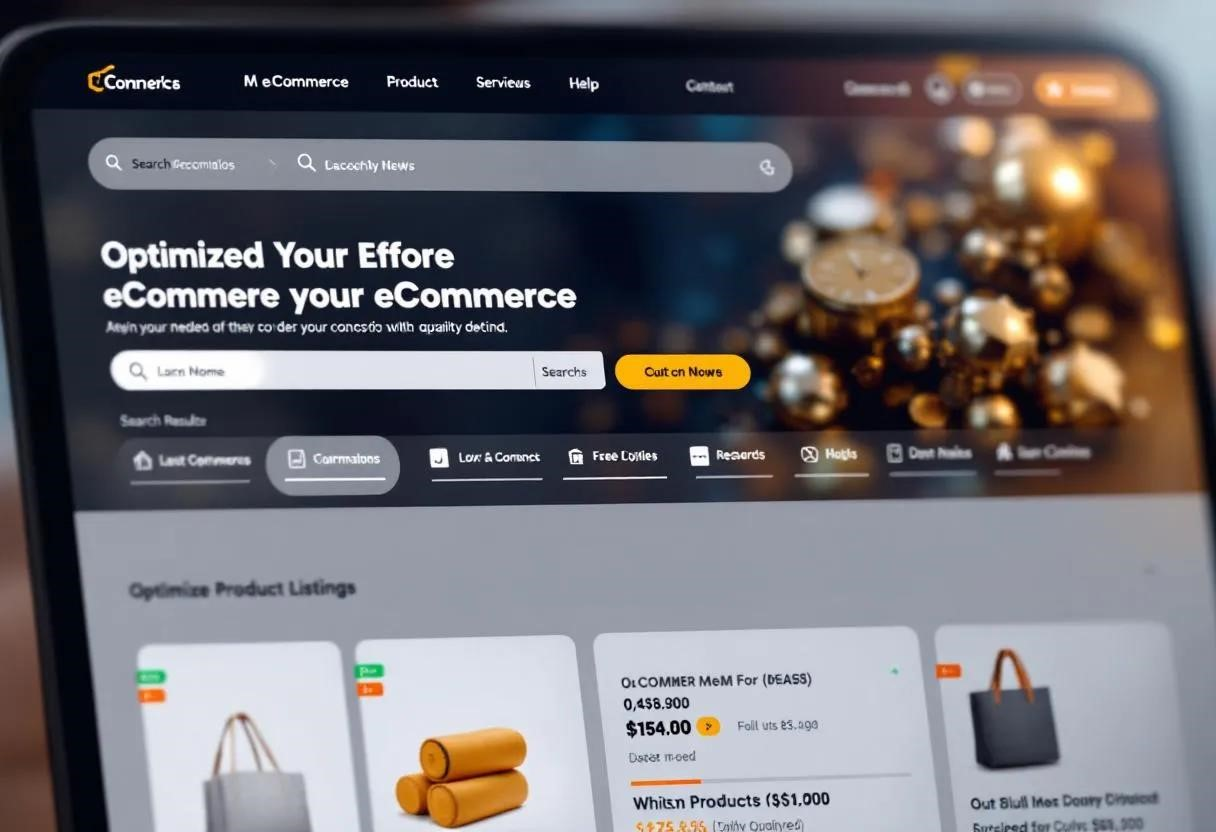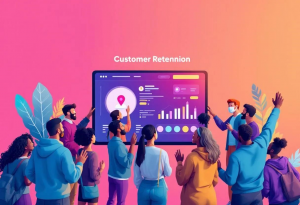Let’s get real about e-commerce SEO. It’s not magic. It’s about getting your online store in front of the right eyeballs using data and smarts. The e-commerce landscape keeps changing, especially in 2024. Strategies that crushed it last year might fall flat now. So, let’s dive into what you need to do right now to pump up your organic traffic and, more importantly, those sweet, sweet sales.
Why SEO is Your E-Commerce Lifeline
Think about it: Where do you start looking for stuff online? Google, right? Or maybe Amazon (which, let’s be honest, is just Google in disguise). If your products aren’t popping up near the top of those search results, you’re basically invisible to tons of potential buyers. E-commerce SEO ensures your store is visible when people are actively searching to buy what you’re selling. It’s about being there at the precise moment of purchase intent.
The Core Four: E-Commerce SEO Essentials
Before we get fancy, let’s nail the basics. These are the cornerstones of any winning e-commerce SEO game plan:
- Keyword Kung Fu: This is ground zero. You must know what your future customers are typing into search bars. Tools like Google Keyword Planner, Ahrefs, and SEMrush are your friends here. They’ll help you uncover relevant keywords with decent search volume and manageable competition. Don’t just stick to basic product names, though. Think long-tail (e.g., “best noise-canceling headphones for studying”) – those target specific needs.
- On-Page Optimization Power: This means tweaking your product and category pages to be super search-engine-friendly. I mean:
- Title Tags: Short, snappy, and keyword-rich.
- Meta Descriptions: Think of these as your ad copy in search results. Make ’em persuasive!
- Header Tags (H1, H2, H3): Use these to structure your content and highlight those all-important keywords.
- Product Descriptions: Ditch the manufacturer’s boring blurb! Write unique, informative descriptions that scream “BUY ME!” (but, you know, subtly).
- Image Optimization: Descriptive file names and alt text are key. Help search engines “see” your images.
- Site Structure Savvy: A well-organized website is a joy for both humans and search engines. Think clear categories and subcategories. Use internal links to connect related pages like breadcrumbs.
Mobile-First or Bust: Why Mobile Optimization is Non-Negotiable

Mobile isn’t just “important” anymore. It is the game. A massive chunk of e-commerce traffic comes from phones. If your site looks janky or runs slow on mobile, you’re throwing money away. Plus, Google uses mobile-first indexing. Meaning? It looks at the mobile version of your site first when deciding rankings. Here’s your checklist:
- Responsive Design: Your website should magically adapt to any screen size.
- Blazing Speed: Mobile users have zero patience. Optimize images, use browser caching, and consider a Content Delivery Network (CDN) to speed things up.
- Effortless Navigation: Help users find what they need on tiny screens. Clear menus and a prominent search bar are lifesavers.
- Touch-Friendly Design: Make sure those buttons and links are big enough to tap with a thumb!
Schema Markup: Speak the Robot Language (and Win)
Structured data – especially schema markup – is like adding little labels to your website so search engines really understand what’s going on. Think of it as providing super-clear context. By using schema, you can tell Google exactly what a product is, its price, its availability, and its customer rating. This can lead to rich search results – think star ratings and product details displayed right in the search snippets – which can seriously boost your click-through rate.
Here’s a taste of what Product schema markup looks like:
<script type="application/ld+json"> { "@context": "https://schema.org/", "@type": "Product", "name": "Awesome Running Shoes", "image": [ "https://example.com/photos/1x1/photo.jpg", "https://example.com/photos/4x3/photo.jpg", "https://example.com/photos/16x9/photo.jpg" ], "description": "The ultimate running shoes for comfort and performance.", "sku": "0446310786", "brand": { "@type": "Brand", "name": "BrandName" }, "review": { "@type": "Review", "reviewRating": { "@type": "Rating", "ratingValue": "4", "bestRating": "5" }, "name": "A really great shoe!", "author": { "@type": "Person", "name": "John Doe" } }, "aggregateRating": { "@type": "AggregateRating", "ratingValue": "4.4", "reviewCount": "89" }, "offers": { "@type": "Offer", "url": "https://example.com/awesome-running-shoes", "priceCurrency": "USD", "price": "79.99", "availability": "https://schema.org/InStock", "itemCondition": "https://schema.org/NewCondition" } } </script> Google has a Structured Data Testing Tool to make sure your schema is on point.
UX is King: Happy Users = Higher Rankings
Google loves a good user experience. A website that’s easy to use, fast, and keeps people engaged will always rank higher. Key UX factors:
- Speed, Speed, Speed: Slow sites kill sales. Use Google PageSpeed Insights to find and squash those speed bottlenecks.
- Navigation Nirvana: Make it brain-dead simple to find stuff. Clear menus are your friend. Implement faceted search so users can filter by category, price, color, etc.
- Product Filtering Power: Let users narrow down their choices by price, size, color, rating – you name it.
- Mobile-First, Always: (Yes, again!) Flawless experience on every device.
- Security is Sexy (HTTPS): Non-negotiable. Google penalizes insecure sites.
- Crystal-Clear CTAs: Guide users to that purchase with killer calls to action like “Add to Cart” and “Buy Now.”
The Future is Now: Voice and Visual Search
Voice and visual search are exploding. People are barking commands at Siri and Alexa to find products. They’re using Google Lens to identify stuff they see in the real world.
- Voice Search Domination: Think long-tail keywords and how people actually talk. Answer common questions about your products in your descriptions and FAQs.
- Visual Search Victory: High-quality images are a must. Use descriptive alt text. And, again, use structured data to give visual search engines all the info they crave.
Content is Still King: Beyond Product Pages
Product pages are vital, but don’t forget content marketing. Valuable, informative content pulls in new customers and positions you as a trusted authority.
Ideas to get you started:
- Blog Posts: Write about topics your customers care about.
- In-Depth Guides: Help customers solve problems or learn something new.
- Videos: Product demos, tutorials, behind-the-scenes glimpses.
Backlink Bonanza: Building Trust (and Authority)
Backlinks are links from other websites to yours. They tell search engines that your site is legit and trustworthy. High-quality backlinks = higher rankings.
Backlink strategies that work:
- Guest Blogging: Write awesome articles for other sites in your niche.
- Broken Link Building: Find broken links on other sites and offer your content as a replacement.
- Resource Pages: Create super-useful resource pages on your site and promote them.
- PR and Outreach: Get journalists and bloggers talking about your products or company.
Your E-Commerce SEO Action Plan
Okay, that was a brain dump! Let’s recap and give you some actionable steps to boost your e-commerce SEO in 2024:
- Mobile, Mobile, Mobile: Make it fast, make it smooth.
- Schema, Schema, Schema: Help search engines understand your products.
- UX is Your Weapon: Easy to use = higher rankings.
- Voice & Visual: Prepare for the future of search.
- Content is King (Still): Attract customers with killer content.
- Backlinks = Authority: Earn those links from reputable sites.
E-commerce SEO is a marathon, not a sprint. It’s about constant monitoring, testing, and tweaking. But if you put these strategies into action, you will see a jump in your website’s visibility and organic traffic. Now get out there and optimize!





